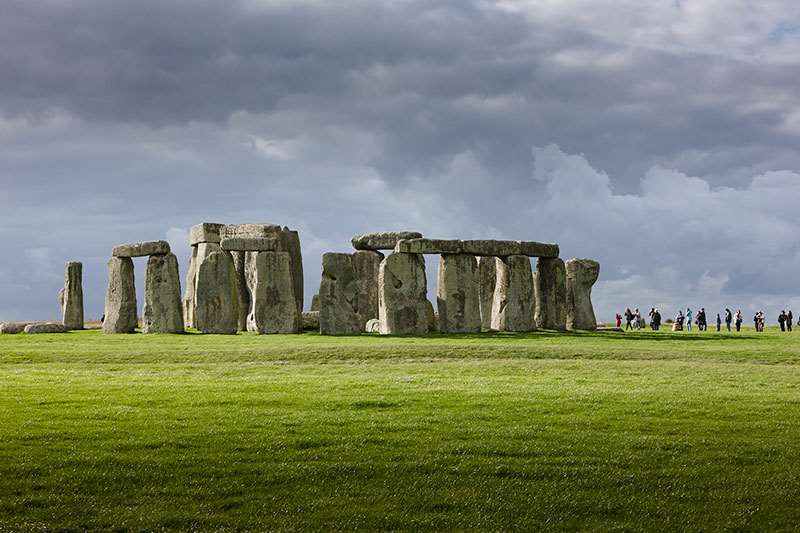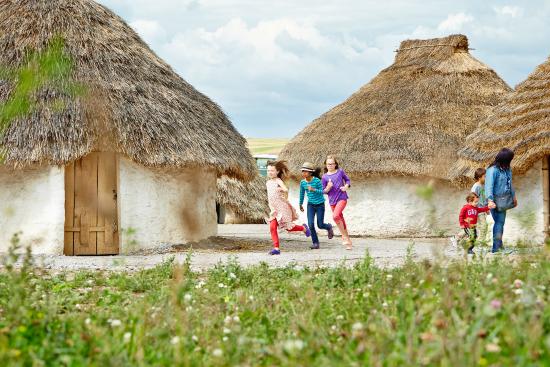
Walk in the footsteps of your Neolithic ancestors at Stonehenge – one of the wonders of the world and the best-known prehistoric monument in Europe. Explore the ancient landscape on foot and step inside the Neolithic Houses to discover the tools and objects of everyday Neolithic life. Visit the world-class exhibition and visitor centre with 250 ancient objects and come face to face with a 5,500 year-old man.
Stonehenge is perhaps the world’s most famous prehistoric monument. It was built in several stages: the first monument was an early henge monument, built about 5,000 years ago, and the unique stone circle was erected in the late Neolithic period about 2500 BC. In the early Bronze Age many burial mounds were built nearby. Today, along with Avebury, it forms the heart of a World Heritage Site, with a unique concentration of prehistoric monuments.
An unforgettable opportunity to learn more about Stonehenge from our knowledgeable guides including time spent inside the tranquil circle of stones.
Stone Circle Experience at Stonehenge takes you up close to this world-famous monument. Learn the secrets of the stones and experience the power and mystery of these ancient sarsens and bluestones for yourself.
Visits last for an hour and take place in the early morning or evening, outside normal visiting hours. They’re also subject to very limited availability, with a maximum of 52 people per session, split into two groups of 26 when at the stones.

Iconic symbol of Britain, a walk around the Stone Circle is the centrepiece of any visit to the Stonehenge and Avebury World Heritage Site.
With a history spanning 4,500 years Stonehenge has many different meanings to people today. It is a wonder of the world, a spiritual place and a source of inspiration.
The Stone Circle is a masterpiece of engineering, and building it would have taken huge effort from hundreds of well-organised people using only simple tools and technologies. Visit Stonehenge to find out more, and use our handy glossary to understand words such as trilithon, sarsen and henge.


Wander around the Neolithic houses outside the visitor centre. Step inside to imagine how people lived 4,500 years ago.
Chat to our volunteers and discover how the houses were built using authentic materials and techniques, based on the evidence of dwellings found nearby.
Watch us demonstrate ancient domestic skills – flint knapping, making rope out of rushes, and grinding grain with a quern and a rider.
Discover the story of Stonehenge – the stones, the landscape, the people and its meaning – through a powerful combination of cutting-edge audio-visual experiences and incredible ancient objects.
Over 250 archaeological objects and treasures discovered in the landscape are displayed together at Stonehenge for the first time. Ranging from jewellery, pottery and tools to ancient human remains, many of these items are on loan from our museum partners, Salisbury Museum and Wiltshire Museum.
Come and see the face of a man who was here 5,500 years ago – a forensic reconstruction based on his bones found near Stonehenge.


Advance Booking is recommended
Last admission time is 2 hours before the advertised closing time.
Entrance to Stonehenge is now managed through timed tickets and advance booking is the only way to guarantee entry on the day and time of your choice. By booking in advance you will also benefit from an advanced booking discount.
English Heritage and National Trust members must also book in advance for their FREE visit. (Free visits are applicable to English Heritage members and members of the National Trust in England or those who hold a National Trust Touring Pass only – this does not include National Trust Scotland, National Trust staff or other National Trust affiliated organisations). All members must show a valid membership card on arrival to be granted free parking and site access.


Days |
Timings |
|---|---|
Monday |
09:30 – 17:00 |
Tuesday |
09:30 – 17:00 |
Wednesday |
09:30 – 17:00 |
Thursday |
09:30 – 17:00 |
Friday |
09:30 – 17:00 |
Saturday |
09:30 – 17:00 |
Sunday |
09:30 – 17:00 |
